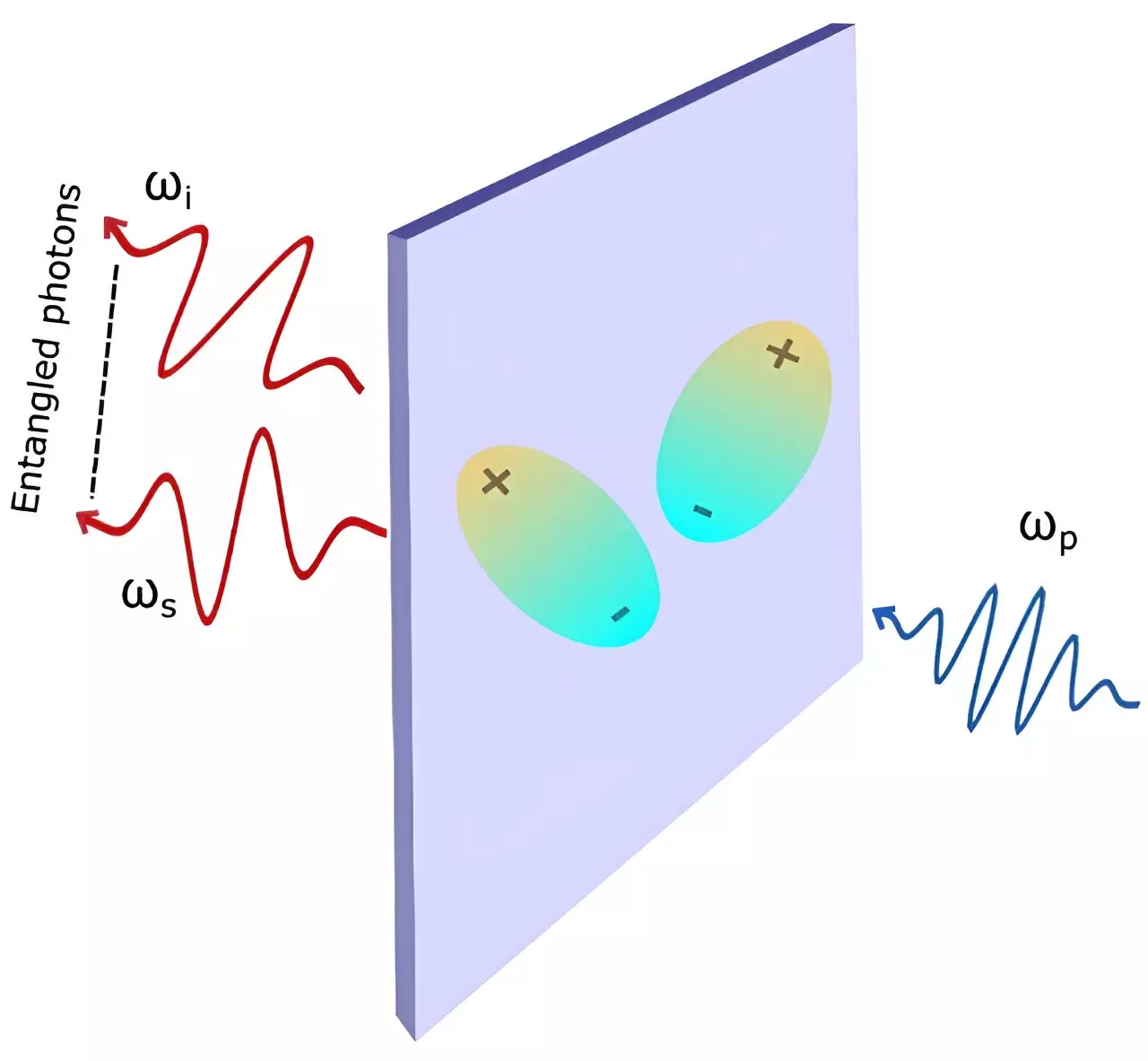Quantum entanglement stands as a fundamental pillar in the arena of quantum technologies, securing its position as a critical mechanism for various applications, including quantum computing, secure communication, and advanced metrology. Essentially, quantum entanglement refers to a condition in which pairs of quantum particles become interconnected in a manner that the state of one particle is directly related to the state of another, regardless of the distance separating them. This intriguing phenomenon leads to the generation of entangled photons, which are vital for facilitating the communication channels necessary in quantum tech. Traditionally, these entangled photon pairs have been produced through a nonlinear optical process known as spontaneous parametric down-conversion (SPDC). However, this method is often hampered by notable inefficiencies that have spurred ongoing research for alternative approaches to enhance the generation of these crucial quantum states.
Researchers from the National University of Singapore (NUS), under the guidance of Associate Professor Su Ying Quek, are at the forefront of enhancing the efficiency of entangled photon generation. By investigating many-body excitonic interactions within nonlinear optical crystals, their research proposes a method that promises to significantly boost SPDC efficiency. Their work hinges on the fusion of theoretical insights and experimental validation, illuminating a new trajectory for quantum optics.
The heart of their approach stems from an in-depth understanding of excitons, which are quasi-particles formed from bound pairs of negatively and positively charged particles. When light interacts with certain nonlinear optical crystals, these excitons can enhance interactions in ways that conventional methods simply overlook. Their discoveries indicate a correlation between the proximity of these charges and the likelihood of successful photon pair generation.
Insights into Many-Body Interactions
A notable aspect of this research is how it sheds light on the intricate nature of excitonic effects. The authors employed comprehensive quantum mechanical calculations, thereby providing an advanced analysis of the non-linear optical response of crystals when exposed to incident light. This meticulous approach enabled them to account for the role of excitons in the efficiency of SPDC, revealing that the closer interaction between excitons significantly ameliorates the outputs of entangled photons.
Dr. Fengyuan Xuan, the lead author, emphasized that, “the probability of these transitions increases when the opposite charges due to excitations in the crystal are located more closely to each other.” Such observations underline a clear departure from traditional methodologies, which often neglect the nuanced interactions that occur within these materials.
Further challenging existing norms, the researchers showed that ultrathin nonlinear optical crystals could resolve an age-old technical dilemma known as the phase matching problem. Previously, researchers typically shunned ultrathin materials due to a belief that reduced volume would directly impair efficiency. Contrary to this belief, the study’s findings indicate that the robust excitonic interactions present within these ultrathin media may counterbalance the challenges associated with their size, thus providing a favorable environment for SPDC to flourish.
This revelation may fundamentally alter the design of quantum light sources. The ability to leverage ultrathin materials means that there may soon be pathways to integrate them into hybrid quantum-photonic systems. The researchers conducted experiments involving NbOI2, a layered nonlinear optical material, and established compelling agreement with previously published data regarding second harmonic generation (SHG), reinforcing the authenticity of their findings.
Implications for Future Quantum Technologies
The implications of these discoveries are substantial, potentially ushering in a new wave of quantum devices that capitalize on enhanced photon generation capabilities. The research offers a promising glimpse into the future of quantum optics, where entangled photons could be efficiently sourced from ultrathin crystals. As the team points out, the innovation lies not just in understanding, but also in potential applications: “These discoveries pave the way for generating entangled photons using ultrathin materials, which can be more easily integrated into hybrid quantum-photonic platforms for next generation devices.”
The NUS research team has delineated a transformative pathway that emphasizes a shift in materials and methods used for generating entangled photons, suggesting a hopeful future for quantum technologies reliant on such intricate phenomena. As this research progresses, the convergence of theory and application could redefine capabilities in quantum communications and beyond.


Leave a Reply